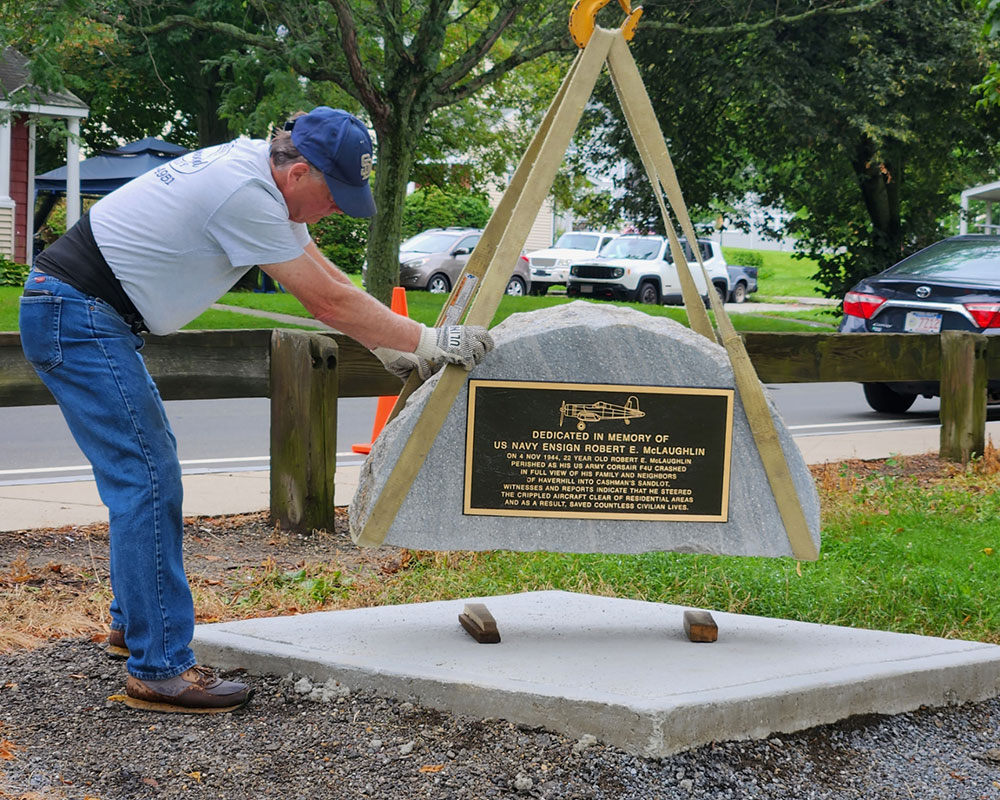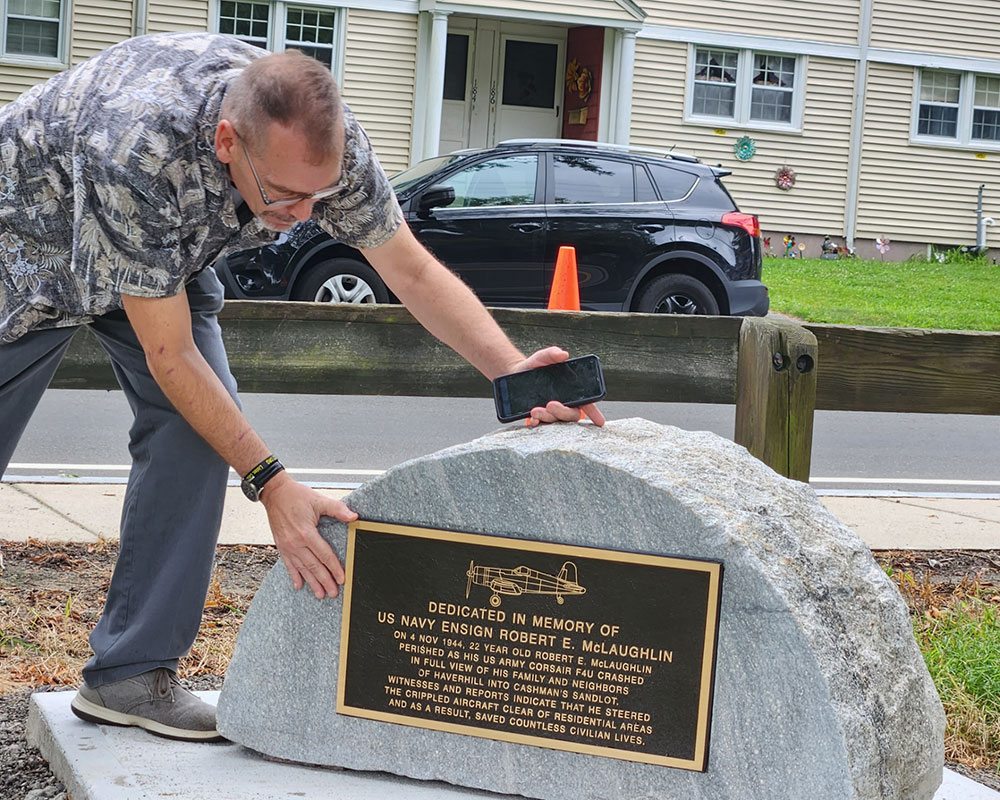(Additional photograph below.)

U.S. Navy Ensign Robert E. McLaughlin.
Haverhill is getting set to remember and honor a 22-year-old pilot who steered his crippled military plane away from homes and children, giving his life in a little-known crash just before the end of World War II off Hilldale Avenue.
A monument to U.S. Navy Ensign Robert E. McLaughlin was placed last Thursday at Cashman Field in preparation for a formal ceremony. Haverhill Human Resources Director Vincent Ouellette and Veterans Services Director Jeffrey C. Hollett were on hand as a crew from Atwood memorial lowered the granite monument onto a pedestal. Hollett told the story of the horrific, Nov. 4, 1944 crash of McLaughlin’s F4U-1D Corsair.
“When he blew a piston—which is what they believed caused the problem—the Corsair was full loaded, weaponized, and he was flying out we believe to Portsmouth, N.H., or Kittery, Maine. The engine blew and, instead of bailing out of the plane, he guided the plan, which was very crippled, to Cashman sandlot where he tried to land it up on the sandlot. He could have bailed out. Instead, he stayed with the plane to try to keep it from hitting residential areas,” Hollett said.
A news item from the time notes McLaughlin, who lived in Lafayette Square, made a “farewell salute” to his mother and father who were watching from their home. “Flying at a low attitude as he circled the area in which his home was located, the young naval pilot was on a training naval flight, preparatory to receiving his commission as a second lieutenant, when his plane was suddenly seen to go into a dive as he ‘waved’ with his wings to his family to identify himself,” according to the account.
Hollett said the sandbank, off Hilldale Avenue in Haverhill, is now a built-out section of homes.
“This is Cashman Park so we felt this was the most appropriate place to put it. What they’re going to do is angle the stone in a particular way so it’s a straight line through it so it points up to Cashman sandlot,” he explained.
Hollett credits Mayor James J. Fiorentini with flagging the history of the crash last year and thanked the Benevento Companies of Wilmington for donating the granite half circle. He also received help from Joseph Seymour, U.S. Navy veteran himself, who at the age of 12, witnessed the crash.
“Joe was very instrumental in helping us put together the maps and overlays because of his engineering background and his knowledge of the crash site. Joe actually gave us a piece of the crash. We actually have a piece of the crash at my office,” he said.
Seymour will be playing an important part in the formal dedication, which has not yet been scheduled, where the artifact will be available.
According to New England Aviation History, McLaughlin was assigned to Carrier Air Service Unit 22 at Quonset Point, R.I. He enlisted in the Naval Air Corps Sept. 30, 1942, training at Amherst College and later in North Carolina, Florida, Illinois and Texas. He earned his wings at Corpus Christi, Texas, July 28, 1944. He is buried at St. Joseph Cemetery, Hilldale Avenue. As part of the tribute, Atwood Memorial is also restoring the McLaughlin gravesite.

A worker from Atwood Memorial guides into place monument to U.S. Navy Ensign Robert E. McLaughlin at Cashman Field. (WHAV News photograph.)

